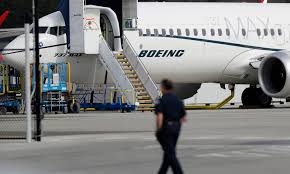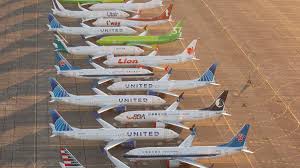A Window into Boeing’s Defective Culture (Part III of III)

Boeing is still under investigation. A grand jury is investigating potential safety and obstructions allegations. Congressional investigations are continuing. Civil litigation surrounding the 737 Max are continuing. Boeing’s long path out of this nightmare appears to be rocky and filled with continuing risks, financial harm and reputational risks.
In reviewing the wreckage surrounding Boeing’s culture and safety performance, public disclosure of over 100 pages of damaging internal communications confirms what we already suspected – Boeing’s culture reflects a rotten corporate culture. This problem is far more extensive than the flawed design of a single aircraft – the 737 Max. Boeing has suffered additional production and safety setbacks and these further evidence what is rotten at Boeing – its core culture.
Internal Communications Examples
In over a hundred pages turned over to the FAA, Boeing employee mocked federal rules, confirmed they were deceiving regulators and mocked safety flaws in the 737 Max.
In referring to the 737 Max, an employee stated “this airplane is designed by clowns, who are in turn supervised by monkeys.”
One of the employees admitted, “I still haven’t been forgiven by God for the covering up I did last year,” referencing misleading statements provided to the FAA in 2018.
Several messages included conversations among Boeing pilots and other employees about software issues and problems with flight simulators for the 737 Max. The employees also discussed incidents when the company concealed problems from the FAA during the certification of the simulators used to develop the 737 Max and train pilots on the system.

One employee asked in 2018 before the first crash, “Would you put your family on a Max simulator trained aircraft? I wouldn’t.” “No,” the colleague responded.
In a number of messages, the Boeing employees insulted the FAA officials reviewing the plane. In advance of a 2016 meeting to discuss training requirements for the plane, a Boeing employee described regulators as “dogs watching TV.”
Another time, a Boeing employee wrote: “There is no confidence that the F.A.A. is understanding what they are accepting (or rejecting).”
The messages included a communications from 2016 in which a top pilot told a colleague that he was experiencing problems controlling the plane in a flight simulation. He also admitted that he had mislead the FAA on this issue.
In a fitting message, one employee wrote: “I honestly don’t trust many people at Boeing.”
Another wrote in reference to the 737 Max: “This is a joke. . . This airplane is ridiculous.”
Boeing’s culture downfall began at least in 2012 when Boeing reduced the work hours for safety testing for the 737 MAX program equivalent to 6.5 employees over a one-year period. In 2013, a Boeing engineer proposed installing an airspeed indicator as done in the 787 Dreamliner, but this request was rejected due to cost concerns.
Later in June and July 2018, senior management rejected concerns by a plant supervisor about production pressures at the 737 Max production plant and potential effects on safety. Boeing not only rejected these concerns but increased production instead.

In the height of the 737 Max certification program, Boeing conducted an internal survey which found that 39 percent of Boeing employees perceived “undue pressure” and 29 percent were concerned about consequences if they reported undue pressure. These findings only underscored the risk of what eventually occurred – a culture breakdown, leading to safety failures, and ultimately airline crashes and killing of innocent passengers.
As one employee prophetically wrote about the 737 Max: “I don’t know how to fix these things … it’s systemic,” and noted: “Sometimes you have to let big things fail so that everyone can identify a problem … maybe that’s what needs to happen rather than continuing to scrape by.”















